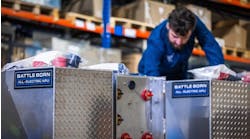My career with the California Highway Patrol (CHP) involved more than enforcing state laws and regulations 24 hours a day, every day. One task I took on along the way was updating the CHP policy manual. The manual educated officers and staff on CHP operations and processes and the consequences of not following them.
Each of us has probably written our initials on a form saying we received our own company’s policy handbook. These days we simply check a box on a computer screen. Similar to all the fine print in an online privacy policy, we click “agree,” but rarely read the text.
But what I discovered about the CHP manual was that the passage of time took a toll. Occasionally, I found out of date procedures, or a process that was no longer used. Yet, we still expected employees to follow those outdated standards with possible consequences if they did not.
When stale policies relate to safety the problems become compounded. Safety policies cover many issues, ranging from physical and property damage, liability, fines and penalties, insurance premiums, qualification for bypass programs like PrePass, and even the ability to legally continue operations as a motor carrier. Stale safety policies can jeopardize all these factors – and others – in two ways:
First, your safety policies are an instruction manual. Do your company safety policies line up with how you want your fleet to operate today? If you want your employees to do things “by the book,” that book must be up to date, or you will not get the results you want.
Second, your safety policies are a line of defense. Do they align with current state and federal regulations? If your employee has an accident, the National Transportation Safety Board, a plaintiff’s attorney, or even an employee’s attorney, could come knocking at your door. They will want you to prove that your actual operating practices mirror what regulations require. If they differ, your liability could increase. Even short of a bad safety outcome, outdated policies may send a message to your employees that you are out of touch and may threaten your ability to discipline when needed.
Let’s take a look at carrier safety policies and their possible shortcomings:
- Speed: Trucking speed policies in safety manuals range from “reasonable for conditions” to “as allowed by state law” to “as set by the speed governor on the truck.” While the speed governor may help fuel efficiency and enforce your company’s maximum allowed speed, safety may require lower speeds. Road conditions, traffic or weather should determine the safest speed. Does your speed policy say that?
- In-cab technologies and personal devices: We all heed the warnings about distracted driving, but we continue to rely on in-cab technologies and personal devices for regular communication. Your fleet policies may require updating to reflect the use of transponders and mobile apps that enhance safety on the road. Electronic bypass, tolling and safety alert programs like PrePass are a great example. The safety implications of ongoing expansion of truck technology require continued review and updates.
- Pre- and post-trip inspections: Federal regulations no longer require a driver to document that a pre- or post-trip vehicle inspection revealed no problems. We can appreciate the reduction in paperwork, but company safety policies should still require these inspections and outline the process for reporting the results.
These are just a few examples of why safety policies may need to be updated. Change is constant. New operations, new regulations and new technology all drive the need to review your safety policies. Soon, updated hours of service regulations will take effect, which may trigger changes in fleet operations. Company safety policies will need corresponding adjustment and clear communication. Stale safety policies only yield sour results.
Steve Vaughn is the vice president of field operations at PrePass Safety Alliance, the provider of the PrePass weigh station bypass service. Vaughn served nearly three decades with the California Highway Patrol and is a past president of the Commercial Vehicle Safety Alliance.



